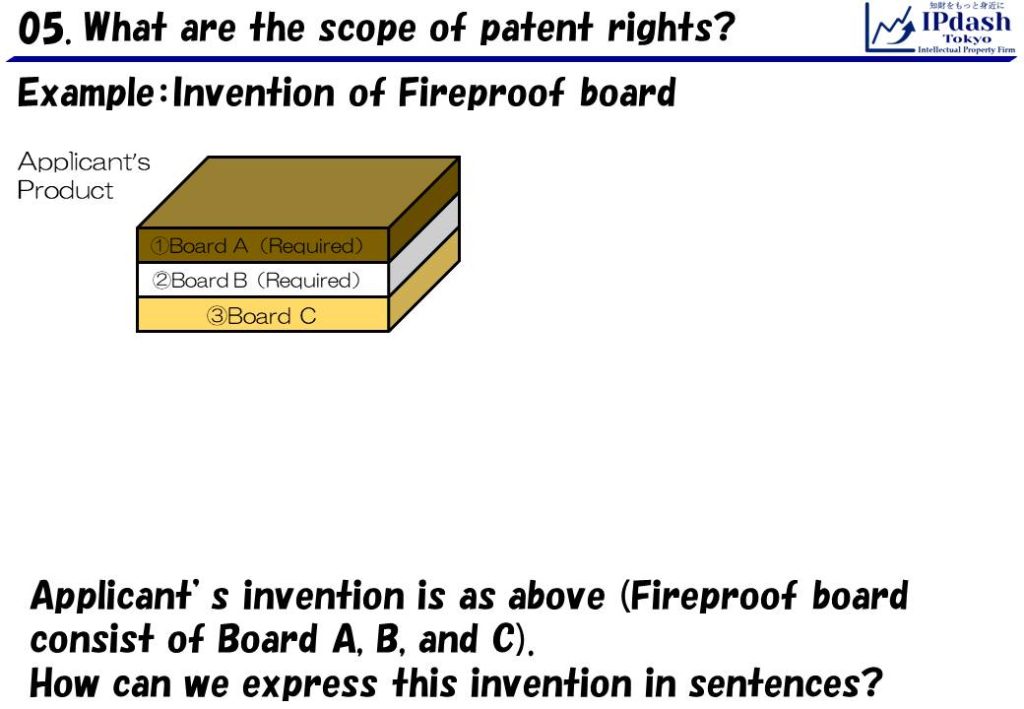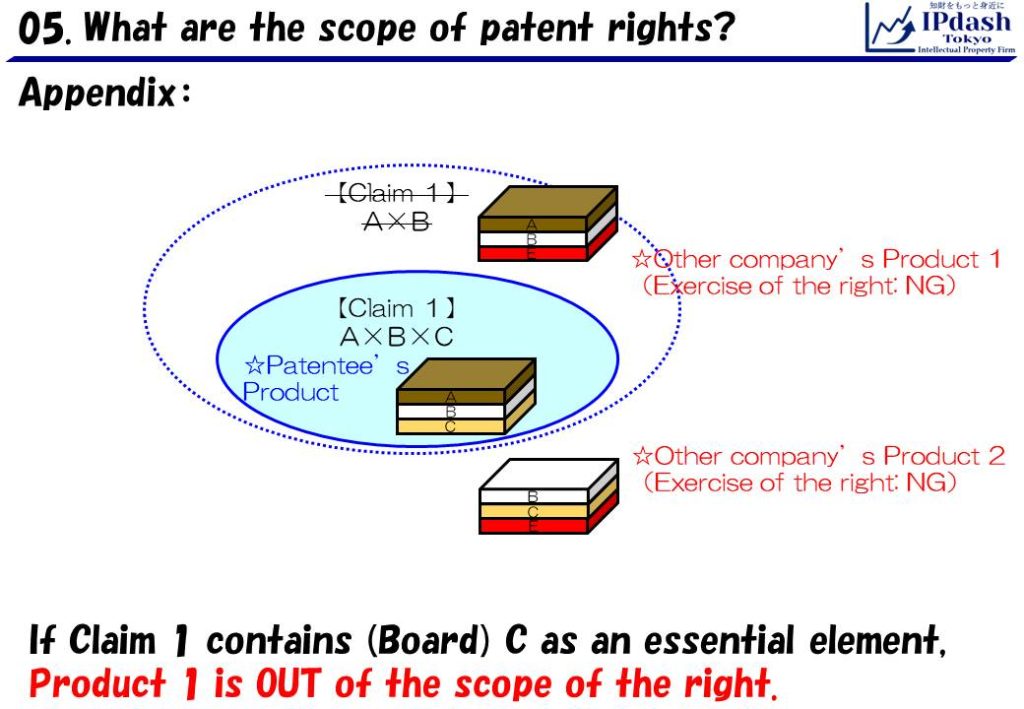
This is the 5th part of our seminar “Intellectual Property in Japan (Patent right)”.
“Claims” will be explained in an easy-to-understand manner with slides.
☆ ☆ ☆
The 2nd chapter “Before Patent Acquisition” starts from this part.
In the 2nd and the 3rd chapter, story proceeds along with the life cycle of a patent.
Chapter 2 is “Before Patent Acquisition”, and Chapter 3 is “After Patent Acquisition”.
☆ ☆ ☆
First, application document filed to Japan Patent Office is disclosed.

The scope of patent rights is determined by its “Claim(s)”.
Intangible invention should be expressed by sentences.
Let’s think about it with concrete examples.

You have invented the fireproof board above.
The board consists of Board A, B, and C.
Important performance (fireproof performance) comes from both Board A and B.
How can we express the invention in claims with sentences?

You should include essential element, both Board A and B, in a main claim.
(NOTICE) In this case, “and” condition is used.
For example, “Fireproof board contains only Board A (Fireproof board doesn’t contain Board B)” is NOT included in the scope of “Board A and B”.
You can add a claim more close to the product as shown in a dependent claim 2.
In the next slide, these relation are shown in a Venn diagram.

Relationships of the scope are shown in the diagram above.
Claim 1 include the fireproof board consists of “Board A and B”, “Board A, B and D”, and “Board A, B, and C”.
Claim 1 can include the fireproof board which is NOT contain “Board C”, because only the Board A and B are in the claim as a essential element.
In addition, the scope of Claim 1 (A and B) include the scope of Claim 2 (A, B and C) completely.
As shown in the slides above, the scope of the patent rights depends on the description in its “Claim(s)”.
☆ ☆ ☆
In the following slide, let’s think on the case that you obtain the patent above.

The scope of your patent is as shown in the slide (light blue double circle).
Now here is the question.
Other company’s product 1 consists of Board A, B, and E.
Product 2 consists of Board B, C, and E.
Are these products in the scope of patent right?
Please think on it before going on to the next slide (answer slide).

In the patent, both Board A and B are the essential elements.
Therefore, the product 1, contains both Board A and B, is in the scope of the right.
It means that you can exercise your right against the producing, using etc. of product 1.
On the other hand, the product 2, does not contain Board A, is NOT in the scope of the right.
Therefore, you can NOT exercise your right against the producing, using etc. of product 2.

If you include Board A, B, and C in the main claim (claim 1) as your product consists of the same, what will happen?
That is, Board C is included in claim 1 as an essential element.
In this case, other company’s product 1 is OUT of the scope of the right.
Configuration of the scope of rights is very important.
☆ ☆ ☆

Fewer element makes the scope of rights broader (Ex: Any fireproof board contains Board A.).
However, if the scope of a patent application includes an existing product (invention), the publication must be rejected by Japan Patent Office.
On the other hand, a patent right with narrower scope may be useless.

I’d like to wrap up with a summary of this part.
1. The scope of a patent right is determined by the description of the claims.
2. Patentee can exercise the patent right against the product in the scope of the right.
3. It is important to assess the scope of the patent right with taking care of existing inventions.
☆ ☆ ☆
Which element should be described as essential?
How express the invention?
How much expand the scope of the right?
Appropriate decision for these questions depends on the skills of a patent attorney.
That’s all for Part 5 (Claims).
IPdash Tokyo Intellectual Property Firm (Japan)
(To List)
